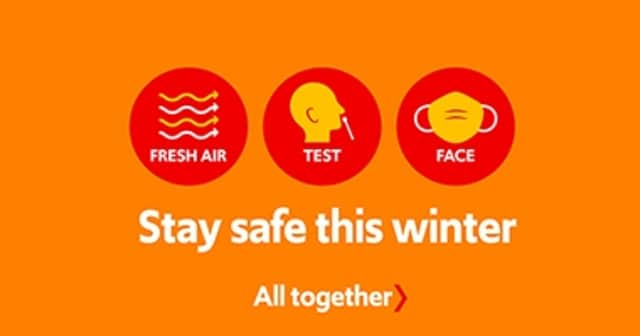Advice for autumn and winter? It’s a breath of fresh air!




As we move into colder months, increased infection rates are expected due to people mixing more freely as they return to work and education as well as socialising more indoors, where most coronavirus infections are spread.
COVID-19’s main transmission is airborne virus particles. As we now spend more time together inside, dangers of breathing in infectious particles increase significantly.
Advertisement
Hide AdAdvertisement
Hide AdWhile vaccines and the COVID-19 booster vaccination remain our best defence, we can all still catch COVID-19 if vaccinated, putting loved ones’ health in danger, because 1 in 3 sufferers show no symptoms.
Coronavirus is spread through particles exhaled from noses and mouths of infected people as they breathe, speak or cough. These linger “like smoke” in unventilated spaces.


Healthcare Epidemiologist Consultant in Infectious Diseases and Microbiology at UK Health Security Agency, Dr Susan Hopkins
Opening windows for ten minutes, or a small amount continuously, makes a big difference.
Advertisement
Hide AdAdvertisement
Hide AdLet fresh air into your home before, during and after visitors.
Good ventilation can substantially reduce the risk of passing on COVID-19 indoors.
And we should still wear face coverings in enclosed spaces and within crowds.
NHS Test and Trace will continue to protect the public.
If you show symptoms, arrange a free PCR test as soon as possible and, if positive, self-isolate.
Advertisement
Hide AdAdvertisement
Hide AdWe should continue to regularly use rapid tests, which are free, easy and results are confirmed within 30 minutes.
These are available by visiting nhs.uk/Get-Tested, (link to nhs.uk/Get-Tested )some pharmacies or by calling 119.
Before attending pharmacies, you should register at gov.uk/get-collect-code (link to gov.uk/get-collect-code) or by calling 119 for a code to show when you collect your test packs.
Over the course of the pandemic over 298 million PCR and rapid lateral flow tests have been conducted, which has identified over 7.8 million COVID-19 cases.
Advertisement
Hide AdAdvertisement
Hide AdReporting results at gov.uk/report-covid19-result (link to gov.uk/report-covid19-result) helps quickly identify virus spread and outbreaks, allowing health chiefs to respond sooner.
If positive, you should immediately self-isolate and confirm your result by taking a PCR test, easily ordered online.
“Lateral flow devices are effective at finding people with high viral loads who are most infectious and most likely to transmit the virus to others,” explained Dr Susan Hopkins.
“It is a very good test,” confirmed the UK Health Security Agency’s Healthcare Epidemiologist Consultant in Infectious Diseases and Microbiology.
3 Key steps
1 Ventilation
Advertisement
Hide AdAdvertisement
Hide AdLet fresh air flow into indoor spaces, allowing COVID-19 particles to blow away.
Opening windows for a short time can help reduce such risks.
Meet family and friends outdoors when and wherever possible.


2 Testing
Lateral Flow Device test regularly, even if you don’t have symptoms, because 1 in 3 people suffering coronavirus don’t show any symptoms.
Advertisement
Hide AdAdvertisement
Hide AdConsider testing if you feel there will be a period of higher risk that day, to yourself or others. Examples include:
- mixing in crowded indoor spaces, for example a nightclub
- visiting vulnerable people.
3 Face coverings
Keep wearing face coverings at all times within crowded spaces.